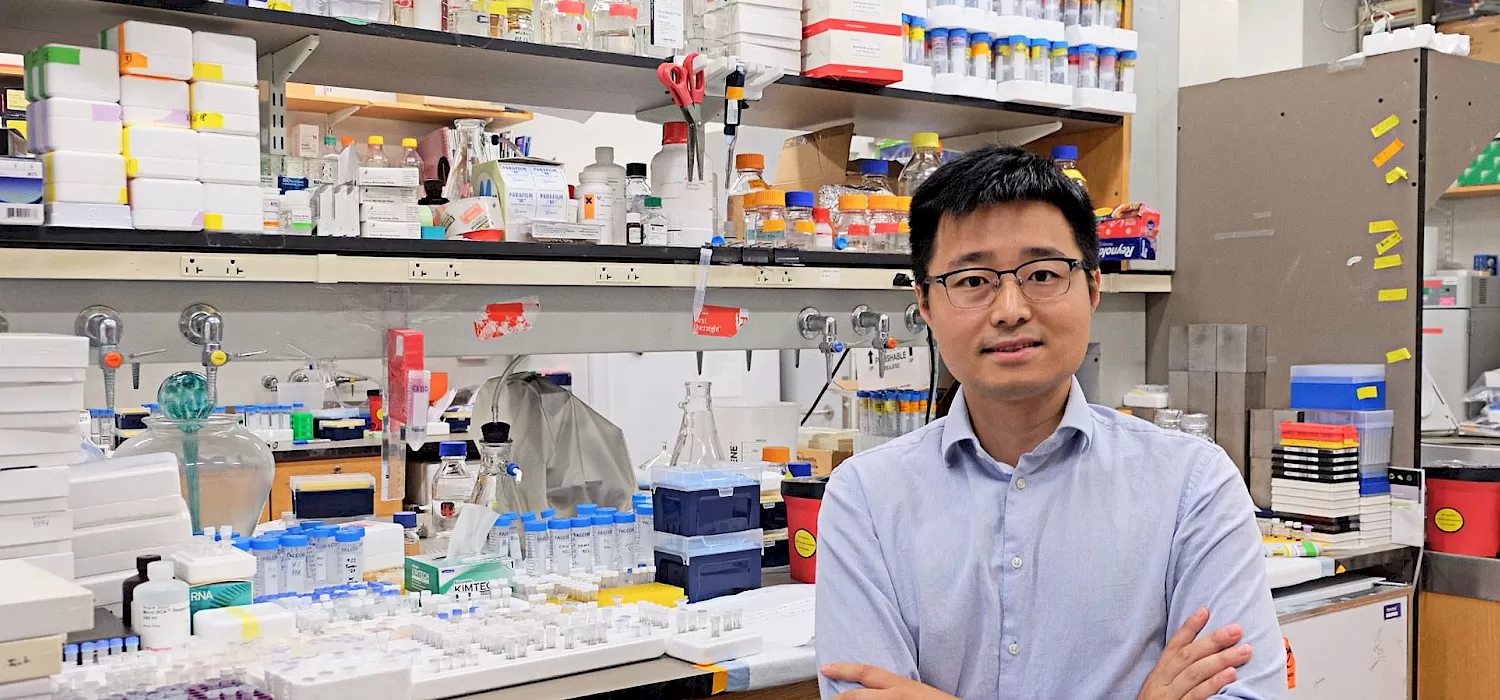New Drugs Restore Brain Balance to Treat Rett Syndrome

The ultimate goal of Rett syndrome research is to find a cure. Researchers, patients with Rett syndrome and their families alike look forward to a day when a drug or gene therapy can totally reverse the symptoms of Rett syndrome. Informed by the wealth of insights from preclinical research, drug discovery aimed at disease target genes has the potential, in the interim, to provide symptomatic relief. As researchers in the lab of Rudolf Jaenisch at the Whitehead Institute for Biomedical Research, we’ve been conducting research on chemical compounds that can restore brain balance and reverse symptoms found in mouse models of Rett syndrome. The work, led by post-doctoral fellow Xin Tang was recently published in Science Translational Medicine.
MECP2, the mutated gene responsible for Rett syndrome, produces a protein that regulates the expression, or protein production activity, of hundreds of genes in the brain. The neurological dysfunction in Rett is likely not directly caused by the mutated MeCP2 protein itself, but rather by the misregulation of protein expression of these downstream genes that occurs in the absence of functional MeCP2 protein in the brain cells. Our group investigates these downstream genes with an aim to fix their expression. Because these genes are directly responsible for brain function, fixing them is likely to result in symptomatic relief in patients with Rett syndrome.
Our previous work, as well as reports from other researchers, has provided strong evidence to show that one important downstream target of MeCP2 is a gene called KCC2. In Rett syndrome, when MeCP2 protein is not working properly, the expression level of KCC2 goes down substantially. We believe that abnormalities in KCC2 expression are responsible for much of the neurological symptoms in Rett syndrome. KCC2 serves as a pump that actively removes chloride ions from neurons. The pumping activity of KCC2 is absolutely critical for maintaining the delicate balance in the brain between excitation and inhibition that allows for the complex motor and social functions in people. When this balance is broken, symptoms such as seizures, loss of motor coordination, and social communication problems arise. Therefore, reduction in the expression of KCC2 in Rett syndrome has direct effects on brain function.
With funding support from RSRT, we aimed to develop drugs that are capable of activating KCC2 gene expression in Rett syndrome neurons. Advantages of a drug-based therapeutic approach are ease of delivery and the ability to control dosing. Using a novel gene-editing tool called CRISPR, we altered the genetic makeup of human stem cell-derived neurons in culture dishes by inserting a biological light-producing enzyme called the “Firefly luciferase” right next to the KCC2 gene so that they become activated together. In this way, the amount of KCC2 produced in a neuron is directly proportional to the amount of light generated from it. We then developed a screening assay that took advantage of the sophisticated robotics at MIT’s high-throughput screening core facility to test a large number of drugs to see if any drugs made the cells glow more, thus increased KCC2 production. After testing hundreds of drugs, we found a total of 30 KCC2 expression-enhancing compounds, or more simply abbreviated, KEECs. In further testing, we found that KEECs not only activated the production of KCC2 protein, but also fixed the high intracellular chloride level and defective inhibition in human Rett syndrome neurons lacking the MECP2 gene.
Having narrowed down our drug candidates, we moved from testing on Rett syndrome neurons in a dish to mouse models of Rett syndrome. These mice that lack the mouse version of the human MECP2 gene and mirror the signs of human patients with Rett syndrome in many ways: they have irregular breathing patterns, coordination and movement problems, social communication problems, and, very importantly, reduced KCC2 expression in the brain. In collaboration with Mriganka Sur’s lab at the Picower Institute at MIT, we treated the mice with two KEECs, KW-2449 and Piperine, and observed encouraging results: the mice injected with KEECs began moving significantly more and had reduced occurrence of abnormal breathing pauses, compared to the mice from the same litter that had not received drug treatment. The Rett syndrome-like signs in these mice were reversed after treatment with these drugs that restore brain balance.
Before we can speak to the effectiveness of our KCC2 expression enhancing compounds, they must of course be tested in clinical trials in patients with Rett Syndrome. Since most of the drug candidates we screened are either natural products available as food supplements or are already FDA-approved for the treatment of other diseases we hope that clinical trials can be expedited. Furthermore, all of our drug candidates are small molecules that can be safely administered through an oral capsule. Our research marks the beginning of a therapeutic strategy to restore brain balance in patients with Rett syndrome that we hope will be safe, convenient, effective, and in clinics in the near future.
References
- Tang, X., et al., KCC2 rescues functional deficits in human neurons derived from patients with Rett syndrome. Proc Natl Acad Sci U S A, 2016. 113(3): p. 751-6.
- Banerjee, A., et al., Jointly reduced inhibition and excitation underlies circuit-wide changes in cortical processing in Rett syndrome. Proceedings of the National Academy of Sciences, 2016. 113(46): p. 7287.
- Duarte, S.T., et al., Abnormal expression of cerebrospinal fluid cation chloride cotransporters in patients with Rett syndrome. PLoS One, 2013. 8(7): p. e68851.
- Lozovaya, N., et al., Early alterations in a mouse model of Rett syndrome: the GABA developmental shift is abolished at birth. Sci Rep, 2019. 9(1): p. 9276.
- Gogliotti, R.G., et al., Total RNA Sequencing of Rett Syndrome Autopsy Samples Identifies the M4 Muscarinic Receptor as a Novel Therapeutic Target. J Pharmacol Exp Ther, 2018. 365(2): p. 291-300.


